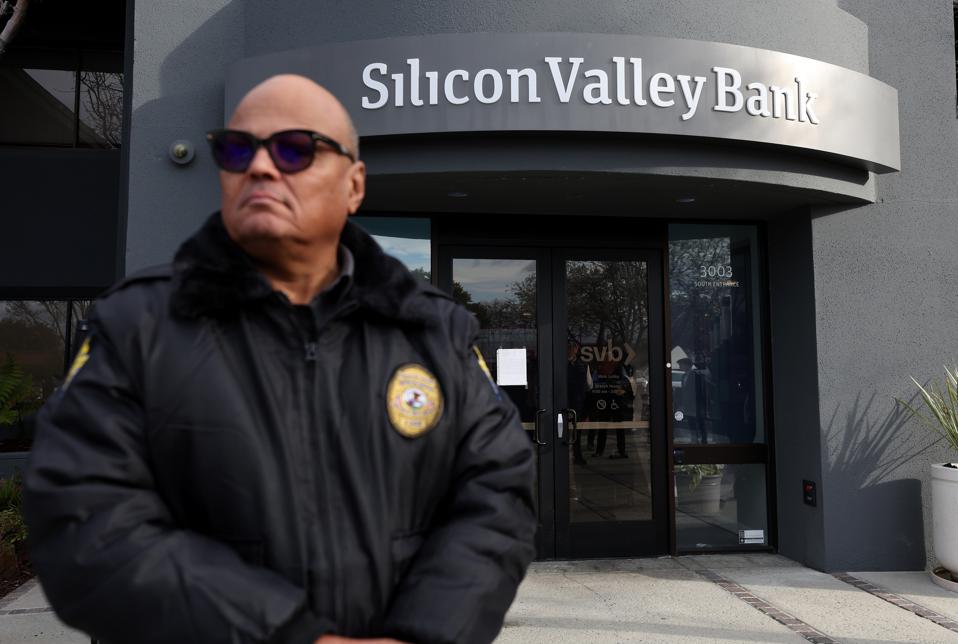OBSERVATIONS FROM THE FINTECH SNARK TANK
Wall Street veterans and politicians have made quite a few unsupported—and, in at least one case, offensive—explanations for why Silicon Valley Bank collapsed and what should be done to rectify the situation.
What Caused The Silicon Valley Bank Collapse?
Citing the bank’s proxy statement—which noted that nearly half of its board consists of women and has “1 Black, 1 LGBTQ+, and 2 Veterans”—Wall Street Journal columnist Andy Kessler wrote, “I’m not saying 12 white men would have avoided this mess, but the company may have been distracted by diversity demands.”
Distracted by diversity demands? Nonsense. This statement was nothing more than a cheap shot at DEI—and a highly offensive one at that. SVB critics might not like who the bank donated to or lent money to, but there’s no connection between the bank’s DEI efforts and its deposit management policies.
Who Gets The Bailout?
Presidential candidate Vivek Ramaswamy penned a WSJ OpEd titled SVB Doesn’t Deserve a Taxpayer Bailout, a poor headline since SVB didn’t get a bailout, nor was that ever the plan. The bailout is for SVB deposit holders, many of whom are startup technology companies.
Ramaswamy doesn’t think they deserve a bailout, either, and admonished startup executives to better manage financial risks and diversify across counterparties.
A former tech exec himself, the Republican presidential candidate went on to say that, because SVB “specialized in providing non-dilutive venture debt to risky early-stage companies,” startup founders were able to keep greater equity ownership in their companies for themselves.
According to Ramaswamy, “taxpayers were never going to participate in that equity upside, so they shouldn’t be asked to foot the bill when downside risks materialize.”
There are two problems with Ramaswamy’s logic:
- If the failing bank was a community bank serving mom and pop businesses on Main Street USA, would Ramaswamy argue that Mom and Pop “must do better in managing financial risks and diversifying across counterparties”? Doubtful. So why are “startup founders” held to a different standard?
- Taxpayers foot the bill for plenty of things that they don’t benefit from or participate in. Singling out this example is a weak argument.
Another misinterpretation of the bailout came from Rep. Thomas Massie, the US representative for Kentucky’s 4th congressional district, who claimed in a tweet that the FDIC was using deposit premiums to “cover deposits of the very rich.”
Not quite. Granted, SVB held deposits from some “very rich” people, but the bank’s client base included startup technology companies which employ many people who would not be considered “very rich.” Protecting those depositors—i.e., the tech startups—enables them to make payroll, pay their bills, and stay in business.
When confronted with this oversight, Massie replied, “We are told that SVB uninsured accounts of concern are largely those of startups that have received venture capital money. Those venture capital funds do have institutional investors as well as individual investors who, by law, have to be wealthy to qualify to invest.”
Wrong again. Two problems here, as well:
- A company’s source of funds has no bearing on its right to get deposit insurance. Deposit insurance doesn’t benefit the investors of a company.
- SVB’s clients include public tech companies, who are likely owned by many types of people—including the “not very rich”—who may own shares indirectly through 401(k) plans and mutual funds. While the bailout doesn’t protect their equity investments, covering the uninsured deposits of those companies helps ensure their solvency and ability to stay in business—which protects the interests of a lot more people than just the “very rich.”
How Did Social Media Help Fuel The Crisis?
Congressman Patrick McHenry, chairman of the US House Financial Services Committee, referred to the turmoil as “the first Twitter-fueled bank run.”
Jason Calacanis, an angel investor and co-host of a popular podcast called the All-In Podcast, warned his Twitter followers that the situation was at “DEFCON1” and that they should bail on SVB if a white knight wasn’t found. In another tweet he asked “Who else is going to buy some guns, provisions, and gasoline tomorrow?”
After the government stepped in and announced that it would backstop uninsured as well as FDIC-insured deposits, Calacanis announced that his “work here is done.”
Calacanis wasn’t alone. Other well-known investors played a role, as well:
- Mark Tluszcz, CEO of Mangrove Capital, tweeted: “If you are not advising your companies to get the cash out, then you are not doing your job as a board member or as a shareholder.”
- Michael Burry, the hedge fund manager who became known for betting on the subprime mortgage collapse that led to the 2008 financial crisis, may have caused some concern when he tweeted, “It is possible today we found our Enron.”
- Investor Bill Ackman warned that if federal regulators didn’t quickly step in and guarantee all deposits, runs on other banks would occur.
Twitter’s Role In The SVB Collapse Was Significant And Predictable
The bad takes on social media regarding the SVB collapse are too numerous to mention. But predictable.
As Frank Rotman, Chief Investment Officer at QED Investors tweeted, “When things go wrong at a bank, every Tom, Dick and Harry on social media seems to know how to re-invent banking.”
According to a study from Cornerstone Advisors, the typical mid-sized bank has less than 5% of its customer following it on Twitter, which may lead bank management to ignore the social media channel in times of trouble.
That’s a risk bank executives shouldn’t ignore.

